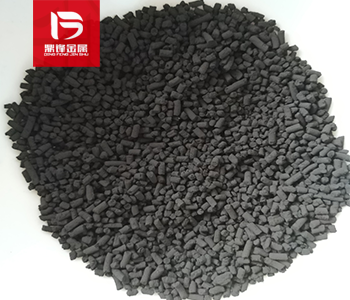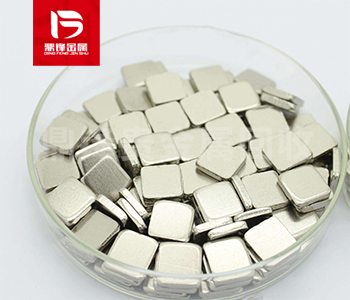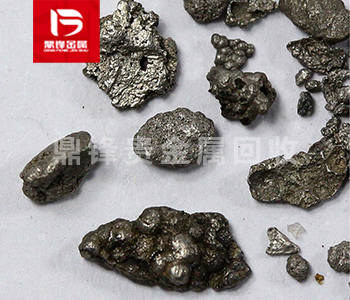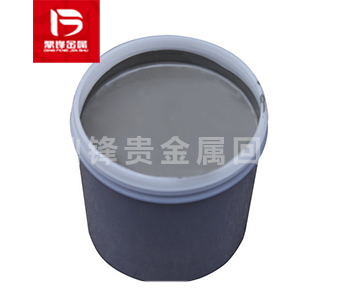Recovery of metal palladium from waste Palladium(II) oxide, Palladium(II) oxide recovery process
Palladium(II) oxide is a common catalyst, which is widely used in chemical industry, medicine, electronics and other fields. However, during the use of Palladium(II) oxide, it is inevitable to produce
Palladium(II) oxide is a common catalyst, which is widely used in chemical industry, medicine, electronics and other fields. However, during the use of Palladium(II) oxide, it is inevitable to produce waste Palladium(II) oxide. These waste Palladium(II) oxide contain valuable metal resources, so recycling waste Palladium(II) oxide becomes an important environmental protection and resource utilization work. The process flow and Committed step of waste Palladium(II) oxide recovery will be introduced in detail in this paper.
1、 Process flow of waste Palladium(II) oxide recovery
1. Pretreatment of waste Palladium(II) oxide: first, collect waste Palladium(II) oxide and conduct preliminary screening to remove impurities and pollutants. Then, the waste Palladium(II) oxide is crushed for subsequent treatment and recovery.
2. Reduction of Palladium(II) oxide: the waste Palladium(II) oxide after pretreatment needs reduction treatment to reduce Palladium(II) oxide to metal palladium. Usually, thermal reduction or chemical reduction methods are used. In the thermal reduction method, waste Palladium(II) oxide is reacted with a reducing agent (such as hydrogen) at high temperature to reduce Palladium(II) oxide to metal palladium. The chemical reduction law is to reduce Palladium(II) oxide to palladium through chemical reaction.
3. Extraction and separation of palladium: waste Palladium(II) oxide after reduction treatment contains palladium and other impurities. In order to extract and separate palladium, solvent extraction, ion exchange, electrolysis, and other methods can be used. Among them, solvent extraction is one of the most commonly used methods. By selecting solvents and adjusting extraction conditions, palladium can be separated from other metals.
4. Refining and purification of palladium: After extraction and separation, palladium still contains certain impurities and needs to be refined and purified. Usually, methods such as high-temperature melting, electrolysis, and chemical treatment are used. These methods can remove residual impurities and impure substances to obtain high-purity palladium.
5. Reuse of palladium: The refined and purified palladium can be used to prepare new Palladium(II) oxide catalysts, or used in other fields. In this way, the waste Palladium(II) oxide can be efficiently recovered and the resources can be reused.

2、 Key process steps of waste Palladium(II) oxide recovery process
1. Pretreatment of waste Palladium(II) oxide: first, collect waste Palladium(II) oxide and conduct preliminary screening to remove impurities and pollutants. This can be achieved through physical methods such as screening, magnetic separation, etc. The removal of impurities and pollutants is to ensure the smooth progress of subsequent processing steps and avoid adverse effects on equipment and reactions.
2. Reduction of Palladium(II) oxide: the waste Palladium(II) oxide after pretreatment needs reduction treatment to reduce Palladium(II) oxide to metal palladium. Thermal reduction method and chemical reduction method are commonly used methods.
Thermal reduction method: waste Palladium(II) oxide is reacted with reducing agent (such as hydrogen) at high temperature. The choice of reaction temperature and time needs to be adjusted according to the specific characteristics of waste Palladium(II) oxide and the nature of reducing agent. Through thermal reduction, the oxygen in Palladium(II) oxide will be removed and reduced to metal palladium.
Chemical reduction method: Palladium(II) oxide is reduced to palladium through chemical reaction. Common chemical reducing agents include Sodium bisulfite, ammonia, Ammonium sulfite, etc. Palladium(II) oxide can be reduced to metal palladium by selecting appropriate chemical reducing agent and conducting reaction under appropriate reaction conditions.
3. Extraction and separation of palladium: waste Palladium(II) oxide after reduction treatment contains palladium and other impurities. To extract and separate palladium, one of the following methods can be used.
Solvent extraction: The selective extraction of specific metals using solvents. By selecting an appropriate organic solvent, the solvent is fully mixed with the waste Palladium(II) oxide solution to make palladium and solvent transfer each other. Subsequently, palladium is separated from the solvent through appropriate operations.
Ion exchange: Utilizing the selective adsorption and release characteristics of ion exchange resins for specific metal ions. The waste Palladium(II) oxide solution is contacted with the ion exchange resin, so that the palladium ion is adsorbed by the resin. Then, through appropriate operations, the adsorbed palladium ions are desorbed from the resin.
Electrolysis: the palladium ion in the waste Palladium(II) oxide is electrolytic deposited on the electrode by using the electrolytic process. Through the current in the electrolyte, palladium ions are reduced to metallic palladium on the electrode.

4. Refining and purification of palladium: After extraction and separation, palladium still contains certain impurities, which require refining and purification treatment to obtain high-purity palladium.
High temperature melting: The extracted palladium is melted at high temperature with other metal impurities. Due to its high melting point, palladium can be separated by utilizing its melting point difference with other impurities. At high temperatures, palladium will melt and precipitate, while other impurities will exist in different forms, thus achieving the separation and purification of palladium.
Electrolysis: Palladium can be further purified through electrolysis. Using a solution containing palladium as the electrolyte, palladium is deposited and purified on the electrode through the action of an electric current. This method can effectively remove residual impurities and impure substances.
Chemical treatment: Treatment of solutions containing palladium through chemical methods such as dissolution, precipitation, extraction, etc. These chemical reactions can cause impurities and impure substances to undergo specific chemical reactions with palladium, thereby achieving purification and separation.
5. Palladium reuse: After refining and purification, palladium can be reused. Palladium can be used to prepare new Palladium(II) oxide catalysts for chemical reactions and catalytic processes. In addition, palladium can also be applied in other fields, such as electronics, medicine, etc.
The waste Palladium(II) oxide recovery process involves multiple steps, including the pretreatment of waste Palladium(II) oxide, the reduction of Palladium(II) oxide, the extraction and separation of palladium, the refining and purification of palladium, and the reuse of palladium. Through these steps, the precious metal palladium in the waste Palladium(II) oxide can be efficiently recovered and reused, realizing environmental protection and sustainable utilization of resources. These process steps require reasonable operation and condition control to ensure the safety and efficiency of the recycling process.
&Quot; Dingfeng Precious Metals Recycling includes precious metals such as gold, silver, palladium, rhodium, platinum, germanium, iridium, ruthenium, etc. This is our business in precious metal recycling. If you have precious metals such as gold, silver, palladium, rhodium, platinum, germanium, iridium, ruthenium that need to be recycled, please contact us and we will provide you with a satisfactory price& Quot;










